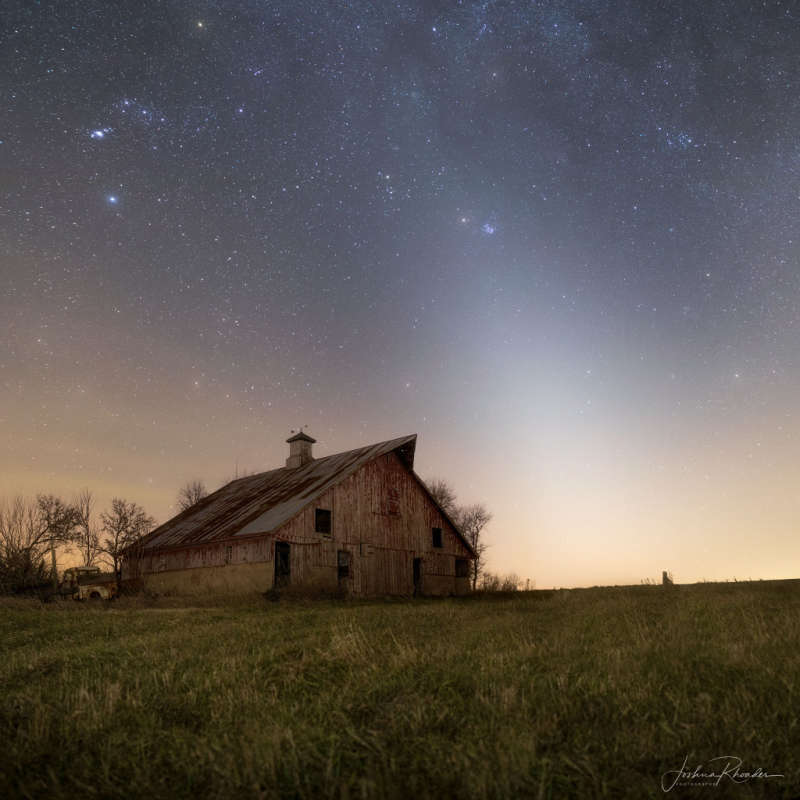
|
Credit & Copyright: Joshua Rhoades
Explanation:
Just after sunset on March 7, a faint band of light still
reaches above the western horizon in this serene,
rural
Illinois, night skyscape.
Taken from an old farmstead, the luminous glow is zodiacal light,
prominent in the west after sunset during planet Earth's
northern hemisphere spring.
On that clear evening the band of zodiacal light seems
to engulf bright yellowish Mars and the Pleiades star cluster.
Their close conjunction is
in the starry sky above the old barn's roof.
Zodiacal light is sunlight scattered by interplanetary dust particles
that lie near the Solar System's ecliptic plane.
Of course all the Solar System's planets orbit near the
plane of the ecliptic,
within the band of zodiacal light.
But zodiacal light and Mars may have a deeper connection.
A recent
analysis
of
serendipitous
detections of interplanetary dust
by the Juno spacecraft during its Earth to
Jupiter voyage
suggest Mars is the likely source of the dust that produces zodiacal light.
|
January February March April May June July August September October November December |
| ||||||||||||||||||||||||||||||||||||||||||||||||
NASA Web Site Statements, Warnings, and Disclaimers
NASA Official: Jay Norris. Specific rights apply.
A service of: LHEA at NASA / GSFC
& Michigan Tech. U.
Based on Astronomy Picture
Of the Day
Publications with keywords: zodiacal light - Mars
Publications with words: zodiacal light - Mars
See also:
- APOD: 2025 September 28 B Leopard Spots on Martian Rocks
- APOD: 2025 July 15 B Collapse in Hebes Chasma on Mars
- APOD: 2025 July 6 B The Spiral North Pole of Mars
- APOD: 2025 June 29 B Dark Sand Cascades on Mars
- APOD: 2025 June 22 B A Berry Bowl of Martian Spherules
- APOD: 2025 June 15 B Two Worlds One Sun
- Perseverance Selfie with Ingenuity
